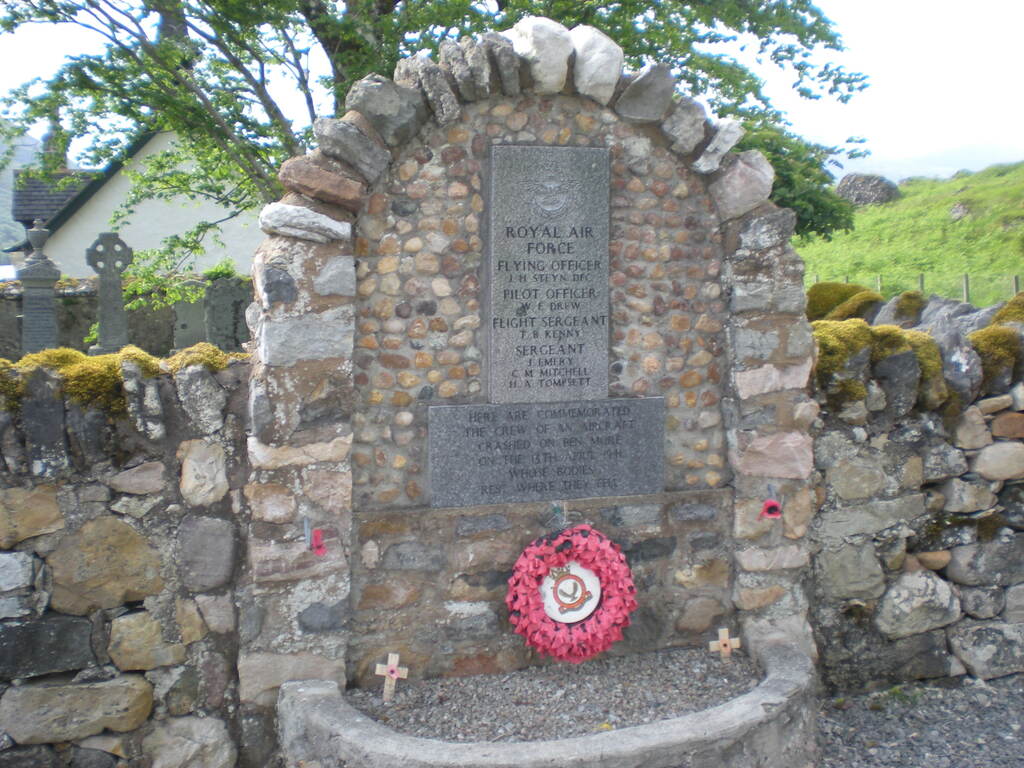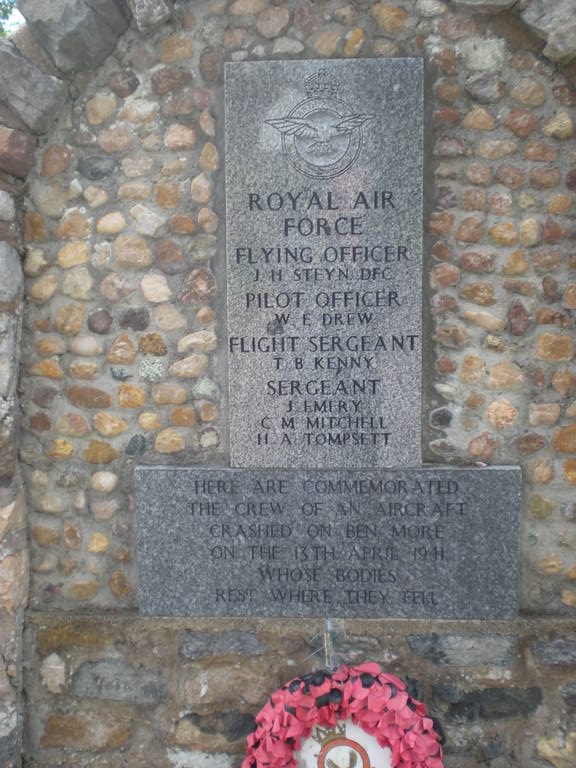Inchnadamph Old Churchyard
- Country United Kingdom
- Total identified casualties 8 Find these casualties
- Region Sutherland
- Identified casualties from First & Second World War
- GPS Coordinates Latitude: 58.15201, Longitude: -4.9762
THE UK's 'MOST REMOTE' WAR GRAVE

BEN MORE ASSYNT
Location: Ben More Assynt, Scotland Language: English Altitude: 655m Rainfall: 974mm
Temperature: -2°c - 17°c Biggest challenge: Remote locations
Nowhere else in the UK is the challenge of access to war graves more obvious than in the Scottish Highlands and islands.
CWGC’s Scotland team often combine their commute with ferries and planes as they seek out isolated graveyards, far from the mainland. A bicycle can be an essential piece of kit when arriving on an island without cars to inspect remote headstones.

Remote islands like St Finan's Isle provide an extra challenge for our regular maintenance cycles.
The war dead they look after, include islanders who served and returned, only to die of injury or illness. Many are pilots or seamen who died in accidents or whose bodies were washed ashore, far from home.
Maintenance trips are constantly rescheduled around narrow weather windows when it’s unsafe to land on small remote islands, like Fair Isle, where just a handful of war graves lie.

These beautiful locations can only be reached in narrow weather windows.
The Commission’s traditional Portland stone will hardly be found here. Granite is one of the few substances that stands a chance of surviving the climate.
The challenge isn’t new – archive documents from 1945 show one former employee’s concerns that the vast spread was too much to handle.
His preferred solution: an island-hopping gardener, equipped with a motorbike and a lawnmower in a sidecar.
The difficulties in Scotland come high up in the mountains too.
Three miles from the nearest road and more than two thousand feet above the nearest village, lies the isolated war grave of six airmen.
They are buried on a rocky plateau near the summit of Ben More Assynt, 20 miles northeast of Ullapool.

The old pile of stones marking the graves can be seen behind the disintegrating wreckage.
All of them died in April 1941 after their plane crashed. When their bodies were later found by a local shepherd, he buried them together using parts of their destroyed plane for a makeshift cross.
By 1944 the Commission had arranged for a temporary war memorial cairn to be erected above the graves. It was unthinkable at the time to install anything more permanent in such a place.

The original Imperial War Graves Commission marker seen at the site of the crash.
To give families somewhere to mourn, a special war memorial was placed by the Commission in the nearest village of Inchnadamph. A slowly growing pile of stones, added to by the odd passing walker, was all that remained up on the high mountain slopes.
And that would have been where the story ended.
Until 2010, when a local mountain guide approached us. He had heard concerns the exact location of the crash site could get lost to time.
And so, with the help of the MOD, a 600kg special CWGC granite marker was lowered into place by helicopter – possibly the most remote war grave in all of the UK.

The 600kg special grave marker was lowered into place in 2010 thanks to the support of the MOD.

The more permanent marker was installed to ensure the location of these graves is never forgotten.
Location information
This site is 120 yards from Assynt Post Office, on the road from Lairg to Lochinver. It contains the Parish School and the ruins of an old Church.
The crash site(please see the historical information below)where the casualties are buried is in a remote location on a plateau marked by a granite memorial placed in 2013. The memorial can be reached by foot however it is a long walk approximately three hours from The Inchnadamph Hotel. The terrain is challenging and it is recommended that anyone attempting this walk should be experienced in hill walking and have appropriate equipment.
The path to Ben More Assynt starts from The Inchnadamph Hotel. Advice on routes and possible guides is available from The Visitor Centre in the centre of Lochinver, their telephone number is 01571 844654.
History information
Inchnadamph is a hamlet in south-west Sutherland at the south-eastern end of Loch Assynt. In early April 1941 an Anson bomber crashed some 2,300 feet above sea level on Ben More, about 5 miles from Inchnadamph. The wrecked plane and the bodies of the crew, six airmen of the Royal Air Force, were not discovered until 25th May, and owing to the inaccessibility of the place and the weather conditions prevailing at the time it was necessary to bury the six bodies at the scene of the crash.
The grave was marked and protected by a cairn, but its position makes permanent maintenance and the erection of headstones impracticable. In 2012, the Commission decided to replace the existing cairn, which had deteriorated on account of the harsh climate, with a granite marker weighing some 600 kilograms, to identify and protect the aircrew’s burial site from becoming lost or disturbed in the future. The airmen themselves are commemorated by a wall mounted Special Memorial Plaque located at the entrance to Inchnadamph Old Churchyard, Assynt.
There are also two 1st World War graves located within the churchyard.



